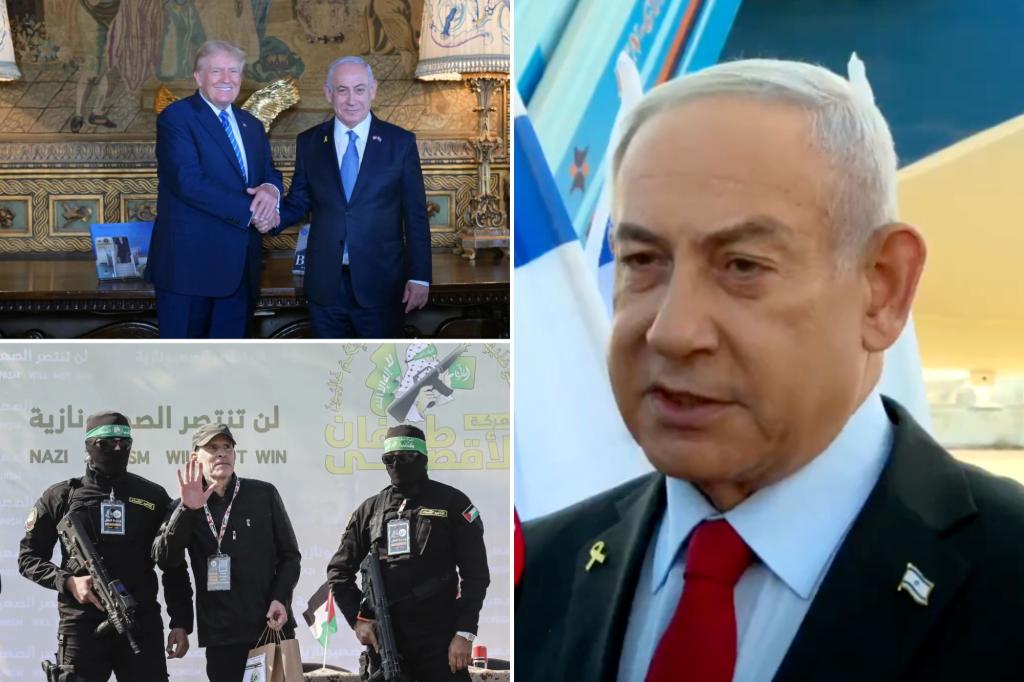Paragraph 1: Setting the Stage for a Crucial Meeting
Israeli Prime Minister Benjamin Netanyahu’s upcoming meeting with US President Donald Trump carries significant weight, marking Trump’s first engagement with a foreign leader since returning to office. This underscores the enduring strength of the US-Israel alliance and sets the stage for discussions on critical issues, including the aftermath of the recent Gaza war, Iran’s regional influence, and the potential expansion of Israel’s diplomatic ties with Arab nations. The timing of the meeting coincides with the delicate commencement of mediated negotiations between the US, Arab nations, Israel, and Hamas, aimed at securing the release of hostages and charting a path towards a lasting resolution to the conflict.
Paragraph 2: The Complexities of the Gaza Ceasefire
The current ceasefire agreement, brokered with US involvement, represents a fragile truce in the wake of a devastating war between Israel and Hamas. While the initial phase facilitated the release of some hostages and Palestinian prisoners, the path forward remains fraught with challenges. Hamas, having regained control over Gaza, demands a complete end to the war and the full withdrawal of Israeli forces before releasing the remaining hostages. This stance clashes with Netanyahu’s commitment to achieving a decisive victory over Hamas and securing the return of all hostages captured during the October 7, 2023 attack. Adding to this complexity, Netanyahu faces pressure from far-right coalition partners to resume hostilities if the second phase of the agreement falters.
Paragraph 3: Trump’s Role and Potential Influence
President Trump’s position on the Israeli-Palestinian conflict presents both opportunities and uncertainties. While a staunch supporter of Israel, he has also expressed a desire to end Middle Eastern conflicts and claimed credit for facilitating the current ceasefire. This duality makes it difficult to predict his approach to the negotiations. Will he prioritize a decisive Israeli victory, as Netanyahu desires, or push for a broader resolution that addresses Palestinian concerns? His previous success in brokering normalization agreements between Israel and several Arab states suggests a potential interest in pursuing a wider peace deal, but the specific contours of his involvement remain to be seen.
Paragraph 4: Netanyahu’s Objectives and the "Peace Through Strength" Doctrine
Netanyahu has clearly articulated his goals for the meeting with Trump: securing a victory over Hamas, achieving the release of all Israeli hostages, and countering Iran’s regional influence, particularly its support for groups like Hamas. He echoes Trump’s "peace through strength" philosophy, suggesting a shared vision of achieving stability through military superiority and assertive diplomacy. This approach raises questions about the potential for escalating tensions with Iran and whether it aligns with the broader goals of achieving a lasting peace in the region. The emphasis on "victory" over Hamas could complicate efforts to negotiate a sustainable ceasefire and address the underlying causes of the conflict.
Paragraph 5: The Human Cost of the Gaza War and the Path to a Lasting Solution
The devastating impact of the Gaza war underscores the urgency of finding a lasting resolution. Thousands of lives were lost, including a substantial number of civilians, and the infrastructure of Gaza lies in ruins. The displacement of a significant portion of the population further exacerbates the humanitarian crisis. The ceasefire agreement, while a crucial step, remains fragile, and the potential for renewed conflict looms large. The second phase of negotiations, focused on a complete end to the war and the return of all hostages, faces significant obstacles, including Hamas’s demands and internal political pressures within Israel.
Paragraph 6: The Ambitions for a Wider Peace and the Challenges Ahead
Beyond the immediate crisis in Gaza, the meeting between Netanyahu and Trump holds the potential for broader diplomatic breakthroughs. Trump’s previous success in facilitating normalization agreements between Israel and Arab states raises the possibility of a similar agreement with Saudi Arabia. However, such a deal faces significant hurdles. Saudi Arabia has conditioned its participation on a resolution to the Israeli-Palestinian conflict, including a credible path towards Palestinian statehood. This condition clashes with the stance of Netanyahu’s government, which opposes Palestinian statehood, and further complicates the already delicate political landscape. The threat of a coalition collapse within Israel adds another layer of uncertainty, potentially leading to new elections and further delaying any progress towards a broader peace agreement.









